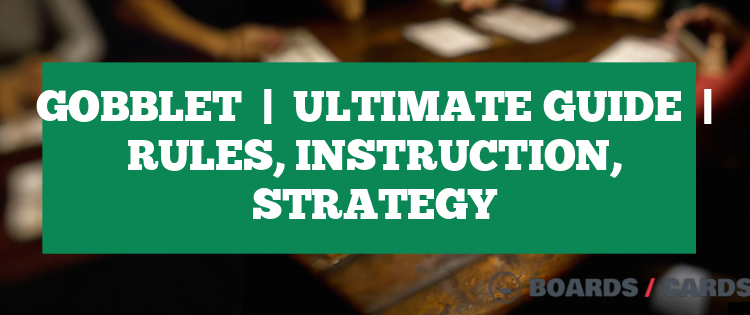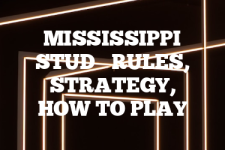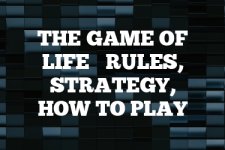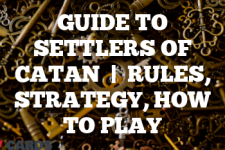Gobblet: Mastering the Game of Strategy and Memory – Winning, How to Play
Introduction
Gobblet is a board game that combines elements of strategy and memory. It’s a game that’s easy to learn but challenging to master, making it a favorite among both casual and serious gamers, including in my house on a casual game night.

The game was invented by Thierry Denoual and first published by Blue Orange Games in 2001. It has since gained popularity worldwide, with numerous tournaments held each year, mainly in the US.
The game is played on a 4×4 grid, similar to a tic-tac-toe or Connect Four board. Each player has a set of 12 pieces, also known as gobblets, which come in four different sizes. The objective of the game is to line up four pieces of your color in a row, either horizontally, vertically, or diagonally. The twist is that the larger pieces can ‘gobble’ up the smaller ones, adding an extra layer of strategy to the game.
Rules for playing Gobblet
- Each player starts with 12 pieces (gobblets) in four different sizes.
- The game begins with an empty board. Players take turns placing their pieces on the board, with the goal of getting four in a row.
- A player can ‘gobble’ an opponent’s smaller piece by placing a larger piece over it. The ‘gobbled’ piece is not removed from the board, but is hidden under the larger piece.
- If a player moves a piece that is covering an opponent’s piece, the opponent’s piece is revealed and becomes active again.
- The game ends when one player gets four of their pieces in a row, or when all the pieces have been placed on the board and no more moves are possible. In the latter case, the player with the most pieces on the board wins.
While these are the official rules, players can also agree on ‘house rules’ to add variety to the game.
For example, some players might agree to play on a larger board, or to allow diagonal lines to count as a win.
How do you play Gobblet
Setup
Each player takes their set of 12 gobblets and arranges them by size. The board is placed in the center of the playing area. The youngest player goes first.
Gameplay
Players take turns placing their gobblets on the board. A player can choose to place a new Gobblet on the board, or to move one of their existing gobblets. If a player chooses to move a Gobblet, they must remember what pieces it is covering, as these pieces will become active again if the Gobblet is moved.
End of the Game
The game ends when one player gets four of their gobblets in a row, or when all the gobblets have been placed on the board and no more moves are possible. The player with the most gobblets on the board wins.
How to Win at Gobblet
Winning at Gobblet requires a combination of strategy and memory. Here are some tips to help you improve your game:
- Plan your moves: Before you place a Gobblet on the board, think about how it will affect the game. Will it help you get four in a row? Will it block your opponent’s strategy? Always try to think a few moves ahead.
- Use your memory: Remembering what pieces are under your gobblets can give you a big advantage. If you know that moving a certain Gobblet will reveal an opponent’s piece, you can plan your moves accordingly.
- Be flexible: Don’t get too attached to one strategy. If your opponent blocks your path to four in a row, be ready to change your strategy and try a different approach.
Best Strategies for playing Gobblet game
While there’s no surefire way to win at Gobblet, there are some strategies that can increase your chances of winning. Here are some strategies to consider:
- Control the center: The center of the board is a key area in Gobblet. If you can control the center, you’ll have more options for getting four in a row.
- Block your opponent: If your opponent is close to getting four in a row, don’t hesitate to use your gobblets to block them. Remember, you can always move your gobblets later if you need to.
- Keep your options open: Try to keep your gobblets spread out on the board, so you have more options for getting four in a row.
Scenarios for Gobblet
Here are some common scenarios you might encounter when playing Gobblet, and how to handle them:
- Your opponent is about to get four in a row: In this situation, you need to act quickly to block them. If you have a larger Gobblet available, you can place it over one of their pieces to break up their line.
- You’re not sure what pieces are under your gobblets: This is where your memory comes into play. If you can’t remember what pieces are under your gobblets, you might need to take a risk and move one of them. But be careful – if you reveal an opponent’s piece, you could give them the advantage.
- You’re running out of gobblets: If you’re running low on gobblets, it’s time to start moving your existing pieces. Try to move your gobblets in a way that helps you get four in a row, while also blocking your opponent.
Frequently Asked Questions about playing Gobblet game
- Can a Gobblet move after it has been placed on the board?
Yes, a Gobblet can be moved to any empty space on the board, or it can gobble an opponent’s smaller piece. - What happens if I forget what pieces are under my gobblets?
If you forget what pieces are under your gobblets, you’ll need to rely on your memory. If you move a Gobblet and reveal an opponent’s piece, that piece becomes active again. - Can I gobble my own pieces?
No, you can only gobble your opponent’s pieces. - What happens if all the pieces are on the board and no one has four in a row?
If all the pieces are on the board and no one has four in a row, the player with the most pieces on the board wins.
External Links
Gobblet Review [Video]
Play Gobblet Online (free, no ads)

Eve Brownlee was a gamer before gaming communities on the internet were a thing. Eve grew up playing traditional, standard deck card games like Rummy and Bezique, taking an interest in the classics Backgammon and Chess. Parlor card games like Bridge continue to keep Eve active in the community. After a long career, primarily in horticulture for USDA in Maryland, Eve now travels and writes on The Pineapple (pineapples.info) and contributes to Quora/Pinterest topics. Contact Eve via email.



